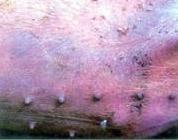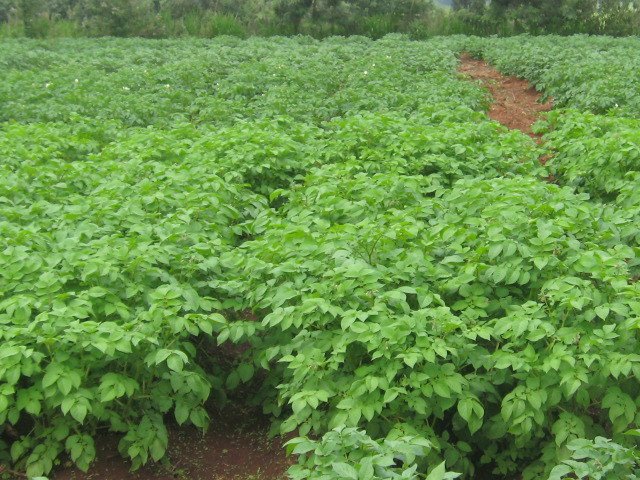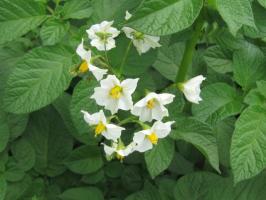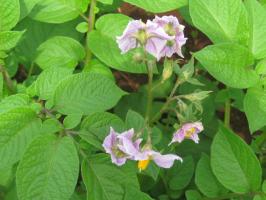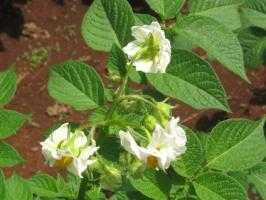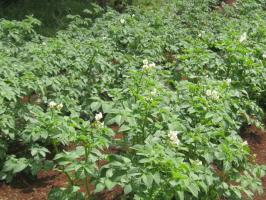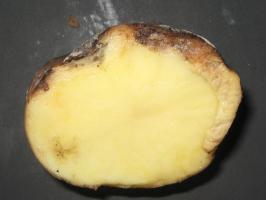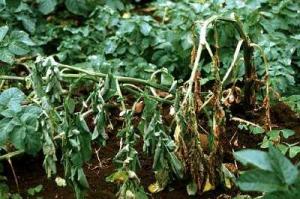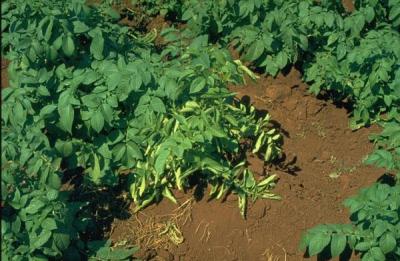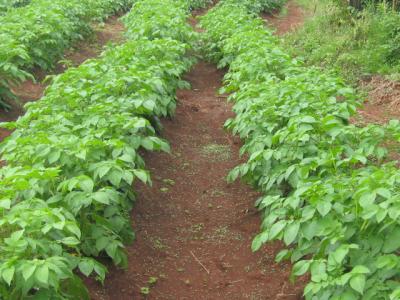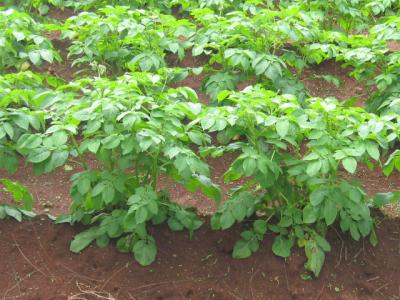Credits: Biovision-Infonet
In this chapter the most common goose diseases are listed, described, and the appropriate treatments/prevention proposed. A well-managed production system which includes cleanliness, know-how, and disease prophylactic practices can greatly reduce the incidence of many diseases.
Recommendations for the control and prevention of disease
- Examine the geese before buying them. Buy geese only from a reliable breeder
- Before the arrival of new geese, make sure that there is adequate good quality feed and water
- Keep feed troughs and drinkers clean
- Provide a stress-free environment for the geese (away from noise and other disturbing elements)
- Do not add birds from an outside source to your own flock; if you must have additional geese, it is better to establish a second flock
- Keep breeders away from growing geese
- The younger the geese, the more susceptible they are to diseases so never mix geese of different ages
- Give timely vaccines and medications. Always use the correct vaccine or medication at the recommended dose
- When inspecting the geese, always go from the youngest to the oldest
- Isolate any sick geese immediately. Removing sick geese from a flock reduces the number of infectious organisms available to pen mates
- Safely destroy dead geese immediately by either incinerating or burying them. Get an early diagnostic report by sending sample carcasses to a veterinary laboratory for a diagnosis of the cause of death
- When selling geese, do not allow a buyer to bring unclean crates and/or boxes onto the farm for transporting the geese
- Thoroughly clean and disinfect the building and equipment between flocks of geese. This may not render the building sterile but it can reduce the number of infectious organisms to such a low level that they cannot initiate a flock infection
- As much as possible, keep wild birds out of your pens
- Maintain complete records at all times
In the following pages a list of goose diseases classified alphabetically is provided. An alternative classification could be according to infectious agent i.e. bacteria, fungi, protozoa or viruses.
ASPERGILLOSIS
Aspergillosis is a condition caused by a member of the fungal genus Aspergillus. In the goose, as in most other classes of poultry, the organs most affected are the lungs, hence the term Pulmonary Aspergillosis.
The disease can be quite severe in young goslings as they may become infected during hatching and even embryos may become infected. The source of infection can be either dirty incubator equipment and/or dirty eggs.
Dirty eggs can contaminate both the setter and hatcher. In addition, it is possible for Aspergillus to penetrate the egg which is how embryos can become infected.
Young growing goslings are also susceptible to Aspergillosis but usually not as severely although they can be infected from contaminated litter.
Symptoms
The symptoms are difficult and accelerated breathing (gasping) with rattling or gurgling noises. The birds might be very depressed and mortality can be high.
Nervous symptoms may appear in a small percentage of the birds and can be accompanied by increased thirst and diarrhoea.
Prevention/Treatment
The first step is to clean the hatching facilities, organize a good sanitation programme and ensure that all hatching eggs are cleaned and fumigated as soon as possible after laying.
Mouldy feed and litter must be removed and destroyed and the building cleaned and disinfected with 1:2000 copper sulphate.
The treatment of Aspergillosis is not always effective. Nystatin and Amphoteciricine-B have proven to be the most effective medications for geese.
If these are not available, a recommended low cost treatment consists of 5 percent potassium iodine in the drinking water for three days, followed by two days of no treatment and then a second treatment for three days.
CHLAMYDIOSIS
Chlamydiosis is a general term which refers to infections caused by a bacterium of the genus Chlamydophila. In birds, the disease is caused by Chlamydophila psittaci and, although reported in geese, is very rare. It is however a disease of public health significance in that it is transmissible to other animals as well as to humans.
Symptoms
The disease has been reported to affect a wide range of organs with symptoms including mild respiratory difficulties, conjunctivitis, inflammation of the sinuses, rhinitis, diarrhoea and atrophy of the breast muscle.
Prevention/Treatment
The antibiotics of choice to treat this disease are the tetracyclines. In some cases salmonellosis may be a complicating factor and it may be necessary to use a combination of antibiotics.
COCCIDIOSIS
Geese can get two distinct types of coccidiosis. The most prevalent form is renal coccidiosis caused by Eimeria truncata.
While intestinal coccidiosis is less prevalent, it is caused primarily by Eimeria anseris. At least five additional species of Eimeria have been isolated from the intestine of the goose. The level of infection and degree of economic loss associated with coccidiosis in the goose is generally low and it is not regarded as a major problem.
Symptoms
Renal coccidiosis can affect geese from 3-12 weeks of age, although the younger birds are much more susceptible.
In an exceptional acute form, renal coccidiosis can result in mortality as high as 80 percent. Other indicators of the disease include depression, weakness, diarrhoea, whiteish faeces, anorexia, dull, sunken eyes and drooped wings.
Diagnosis of renal coccidiosis can be confirmed by locating the distinctive oocysts in the kidneys and in the cloaca near the urethras. Birds quickly develop immunity to re-infection by Eimeria truncata.
Intestinal coccidiosis also mostly affects young birds but does not always result in mortality.
Rather, the infection produces anorexia, a tottering gait, debility, diarrhoea and morbidity. The small intestine becomes enlarged and filled with reddish brown fluid. Lesions are primarily in the middle and lower portion of the small intestine.
Prevention/Treatment
Various sulphonamide drugs and coccidiostats have been used in the treatment of renal and intestinal coccidiosis of geese.
If the geese are to be fed rations which were formulated for other types of poultry, it should be noted that in spite of popular belief to the contrary, waterfowl can be fed rations containing most of the coccidiostats used for chickens.
CRYPTOSPORIDIOSIS
This is a protozoan disease caused by parasites of the genus Cryptosporidium which infects both the lungs and intestine of geese.
It is found worldwide wherever commercial poultry are raised and, as poultry health specialists develop appropriate tools to identify it, it is expected that more cases will be reported.
This probably explains why reports from the goose industry are that its incidence seems to be on the increase.
Symptoms
One form of Cryptosporidiosis infects the respiratory tract and the symptoms include depression, sneezing and respiratory distress with moderate mortality.
The other form infects the digestive tract and the symptoms include diarrhoea and, if the geese are young, can result in a relatively high mortality rate.
Because a number of diseases can produce the same symptoms, fluids obtained from respiratory tract and the faeces should be examined for cysts.
Prevention/Treatment
There are no effective drugs for the prevention or treatment of Cryptosporidium.
There is evidence that once infected birds recover, they are immune, but to date no vaccine has been developed.
Good sanitation is recommended as a preventative measure, together with steam cleaning of infected premises. The oocysts of Cryptosporidium are extremely hardy.
DERZY’S DISEASE
Derzy’s disease is a viral disease also known as Parvovirus disease because of the causative agent. Other names include Goose Plague, Goose Hepatitis, Goose Enteritis, Goose Influenza, Infectious Myocarditis and Ascetic Hepatonephritis. It is a highly contagious disease that affects young geese. The disease has been reported to exist in any part of the world where geese or Muscovy ducks are raised since they are also susceptible to it and can transmit the disease to geese. In its acute form, the disease can result in up to 100 percent mortality rate or it can occur in a more chronic form. If birds are infected during the first week of age, very high losses can occur but if the goslings are 4-5 weeks old or older the mortality rate will be negligible.
Symptoms
For goslings under one week of age the clinical signs are morbidity (anorexia and prostration) and mortality, with deaths occurring in 2-5 days.
Older birds, depending on their level of maternal immunity, will exhibit anorexia, polydipsia, weakness with a reluctance to move, nasal and ocular discharge, swollen and red uropygial glands and eyelids and a profuse white diarrhoea.
Prevention/Treatment
There is no treatment for Derzy’s infection. Adult breeding geese that have been naturally infected with the parvovirus become immune and transfer this passive immunity to their progeny.
This passive immunity will persist in the newly hatched goslings for 2-3 weeks. It is the phenomena of passive immunity being transmitted to the offspring that has led to the development of a recommended vaccination programme.
In its simplest form, all goslings should be vaccinated at about two weeks of age. This assumes that the goslings’ parent flock had been vaccinated which would mean that the goslings? natural passive immunity would protect them until 2-3 weeks of age.
For birds not designated to be breeders, this single vaccination is sufficient. Birds designated to be breeders should be vaccinated again three weeks before the beginning of lay and three weeks before the beginning of each subsequent lay.
In addition, some practitioners recommend a booster vaccination at peak egg production.
If the parent flock had not been vaccinated which would mean that no passive immunity was passed on to the goslings, the recommendation would be to give serum to the goslings on day one and on day ten to give them passive immunity and to then vaccinate them on day 21.
DUCK VIRUS ENTERITIS
Duck Virus Enteritis (DVE) is an acute, contagious disease caused by a herpes virus that can infect ducks, geese and swans although the incidence of the disease in geese is very low.
DVE can be transmitted directly, by contact between infected and susceptible birds, or indirectly, by contact with a contaminated environment.
Birds that have recovered from DVE are immune to re-infection by the DVE herpes virus.
It should be noted that in Australia a herpes virus has been isolated from a flock of infected geese (with a mortality rate of 97 percent) which was anti-genically distinct from the duck viral enteritis herpes virus.
Symptoms
The symptoms depend on the age and sex of the geese, the stage of infection and the virulence and intensity of the virus exposure.
Lesions of DVE are associated with vascular damage (tissue haemorrhages and free blood in the body cavities), vascular eruptions at various locations on the mucosa surface of the gastrointestinal tract, as well as lesions of lymphoid and other tissues.
Prevention/Treatment
There is no treatment for DVE but vaccines that are effective have been developed.
ERYSIPELAS
Erysipelas is generally an acute, sudden infection of individual geese within the flock. In both young and adult birds it is caused by the bacterium Erysipelothrix rhusiopathiae.
Outbreaks of this disease which are economically significant are uncommon in avian species, with the exception of turkeys, but some cases have been reported for geese.
Erysipelothrix rhusiopathiae is somewhat unique in that it can infect over 50 animal species and can also infect humans.
In the latter case, the infection usually enters through scratches or puncture wounds and is considered a safety issue for people working with infected animals. Human infections can be treated with antibiotics.
Symptoms
Infected geese will appear depressed, have diarrhoea and die suddenly. Lesions are suggestive of generalised septicaemia.
Treatment
The antibiotics of choice are rapid-acting forms of penicillin that can be administrated together with an erysipelas bacterin. Since the presence of the disease in geese is sporadic, routine immunisation is not generally recommended. However, in areas where the disease is prevalent, and particularly for breeder flocks, vaccination is recommended. Birds that have recovered from acute infections have a high degree of resistance to re-infection.
FLUKES
Flukes (trematodes) are flat, leaf-like parasitic organisms. Over 500 species belonging to 125 genera and 27 families are known to occur in birds. Generally, flukes are not a problem for geese, however, geese with access to natural lake or pond water may become infected. This is because most flukes have an aquatic snail (genus Limnaea) as an intermediate host. The dragon fly (genus Odonata) is the second intermediate host in many cases.
Symptoms
Flukes may invade almost every cavity and all tissue of birds and can show up unexpectedly at a post-mortem. One species of fluke known as the oviduct fluke (Prosthogonimus ovatus), can infect the oviduct which results in flukes appearing in the geese’s eggs.
Prevention/Treatment
The only practical solution is to remove the birds from the source of infection. This can be done if the intermediate host(s) is/are known.
A sample life cycle of flukes (Source: Guy, 1996)
(1) Infected geese excrete fluke eggs in their dropping.
(2) When the conditions are favourable, the eggs hatch, producing a primary larvae.
(3) The larvae mature in an intermediate host (a snail of genus Limnaea).
(4) The intermediate host lays the mature larvae on grass.
(5) After ingesting the larvae by grassing, the geese become re-infected.
FOWL CHOLERA
Fowl Cholera, also known as Pasteurellosis, is a contagious disease affecting all domestic and wild birds. Pasteurella multocida is the causative agent, to which geese are highly susceptible and mortality can be high.
Symptoms
Fowl Cholera usually appears as a septicaemic disease, associated with high morbidity and ortality.
Perhaps the most characteristic aspect of the acute form is the sudden death of birds with the symptoms appearing only a few hours before death.
The chronic form, which can follow the acute form, normally shows as localised infections. The lesions associated with this disease can take several forms, but in most cases the heart, pericardium and air sacs are damaged.
Prevention/Treatment
Fowl Cholera is not a disease of the hatchery nor is it one transmitted through the egg. Rather, infection occurs when the geese are on the farm.
The first step in the control of Fowl Cholera is therefore good sanitary management practices and keeping the geese separate from other birds.
In areas where Fowl Cholera is present either in geese or other species of birds, vaccination of all birds is recommended. In the case of an outbreak, it is possible to treat the birds to stop the spread of the disease, but this must be done quickly.
LEUCOCYTOZOONOSIS
This is a parasitic disease of birds which affects the blood cells (especially the white blood cells) and the tissues of various internal organs (parasite multiplication occurs in the macrophages of brain, liver, heart, lungs, and spleen).
It is a very uncommon disease in geese but outbreaks of economic significance have been reported. Leucocytozoon simondi is the causative agent in waterfowl and has been reported in 27 species of ducks and geese in North America, Europe and Vietnam.
Symptoms
Leucocytozoon infections are diagnosed by direct microscopic observation and by identification of either the gametocytes (sexual stage of the parasite) in stained blood samples or of the schizonts (stage of massive multiplication) in tissue sections.
Prevention/Treatment
Treatment of leucocytozoonosis with drugs has, in general, limited success and no effective treatment has been found for Leucocytozoon simondi.
Control methods require the elimination of the insect carriers that include various species of diptera (simuliid flies and culicoid midges) that live near streams.
LISTERIOSIS
Listeriosis is not a common disease of geese but some instances have been reported in temperate areas of the world.
This is probably due to the fact that, in temperate climates, Listeria monocytogenus (the causative agent) is found in both faeces and soil. Also, it is in these areas that many geese are kept on pasture and therefore are exposed to the organism.
Symptoms
The symptoms are septicaemia with necrotic areas in the liver and heart. Encephalitis has been reported in young geese. Infected birds appear emaciated with diarrhoea.
Prevention/Treatment
Prevention depends on eliminating the source of infection. As the organism is resistant to most commonly used antibiotics, high levels of tetracyclines are usually recommended for treatment.
MYCOPLASMA INFECTIONS
Mycoplasma infections, also know as Pleuro-Pneumonia. Like Organisms or PPLO, can cause relatively serious problems in geese.
These organisms have an intermediary structure between that of bacteria and viruses. At least three species of Mycoplasma (Mycoplasma anseris, Mycoplasma claucale and Strain 1220) have been isolated in geese.
In recent years the prevalence of Mycoplasma infections in geese in a number of areas appears to have increased. This is most notable when birds are managed under intensive conditions.
Symptoms
The main problem of Mycoplasma infections is that in breeder flocks it results in reduced egg production and lower fertility.
There is necrosis of the phallus (Venereal Disease) which can cause a severe drop in fertility.
In young goslings Mycoplasma infection results in reduced growth, and respiratory and air sac infections. For young geese the common source of Mycoplasma infection is from the hatching egg.
Prevention/Treatment
The most important aspect of a Mycoplasma control programme is to ensure that the grandparent and parent stocks are Mycoplasma-free so that goslings from these flocks are not infected.
Treatment of eggs from an infected flock is achieved by dipping the eggs in a tylosin solution before the eggs are incubated. Infected goslings can be treated by adding either tetracycline or tylosin to their drinking water.
MYCOSIS OF THE DIGESTIVE TRACT
Mycosis of the digestive tract, caused by Candida albicans, can occur frequently in some classes of poultry but not in geese.
An exception is force-fed birds, where inflammation of the oesophagus may be caused by the insertion of the corn dispenser. This inflammation can then provide a port of entry for Candida albicans.
Symptoms
The symptoms are not particularly characteristic but infected birds show unsatisfactory growth, are stunted, listless and have ruffled feathers. Lesions occur most frequently in the crop and are characterised by a whitish deposit.
Prevention/Treatment
Since unhygienic and overcrowded conditions are conducive to Candida albicans infections, the first step is to eliminate these.
The addition of copper sulphate to the drinking water has had variable results in treating chickens and geese.
Sodium bicarbonate in the drinking water increases the pH in the crop and creates an unfavourable condition for the organism as it likes an acid environment. Addition of either Nystatin or Amphotericin to the feed has been reported to be effective.
MYCOTOXICOSES
Mycotoxicoses is a disease caused by exposure to mycotoxins, and the most prevalent source of mycotoxin contamination for geese is mouldy feedstuffs.
Diagnosis of Mycotoxicoses can be very complex since hundreds of mycotoxins have been identified.
However, knowing what the geese are being fed, the source, the symptoms the geese are exhibiting and whether or not other livestock or poultry being fed the same feedstuffs are showing similar symptoms, will allow diagnosis of the problem and identification of the source(s) of the mycotoxin.
In tropical countries where aflatoxins are very common, their origin is connected with the development of genus Aspergillus flavus and Aspergillus parasiticus growing mainly on peanuts but also on soybeans, copra, rice bran and corn.
According to the literature, alflatoxins may cause slow growth, a drop in egg production and feather loss for all species of waterfowl, although geese are among the less sensitive.
The genus Fusarium produces numerous toxins injurious to geese, and these have been found in corn, sorghum, barley, sunflower seed, oats, mixed feed and brewers’ grains.
Fusarium mycotoxin production thrives in conditions of high humidity and a temperature of 6-24degC.
In temperate climates it is therefore essential that grains be harvested early before the cool-humid conditions of fall arrive as these are conducive to mycotoxin production.
Symptoms
T-2 toxin is one of the most common Fusarium toxins and, depending on the level of contamination, will cause feed refusal, reduced activity, increased water consumption, reduced egg production and reduced hatch.
There are reports that exposure of young geese to T-2 toxin has resulted in the geese dying within two days.
Another Fusarium toxin to which geese are very sensitive is zearalenone which can not only result in an immediate drop in fertility but can also permanently damage the testes of the gander.
Prevention/Treatment
Treatment is to remove the contaminated feedstuff immediately and provide the geese with fresh, uncontaminated feed. The best prevention is to ensure that all purchased feedstuffs are mycotoxinfree.
NECROTIC ENTERITIS
Necrotic
enteritis is caused by Clostridium perfringens and has been reported to
occur in geese although the incidence of the disease does not appear to
be high. Clostridium perfringens can be found in soil, faeces, dust, litter and contaminated feed.
Symptoms
The clinical signs of Necrotic enteritis are severe depression, decreased appetite, reluctance to move, diarrhoea and ruffled feathers. Sick birds may die quickly due to enterotoxemia and necrosis of the small intestine.
Prevention/Treatment
Prevention is the rule. Many birds have natural populations of Clostridium perfringens in their caeca, but rarely in the small intestine. Stress or any irritant to the digestive tract can provide the stimulus for this genus to appear and multiply in the small intestine and should be avoided. If the disease appears, a number of antibiotics have been found to be effective which include lincomycin, bacitracin, oxytetracycline, penicillin, tylosin, virginiamycin, avoparcin and nitrovin.
NEPHRITIC HEMORRHAGIC ENTERITIS
Nephritic hemorrhagic enteritis is a disease that is currently quite prevalent in the south western region of France and is often referred to simply as NEHO. It can infect geese from 4-20 weeks of age and causes mortality rates from 30-100 percent. The causes of this disease are not well understood but it seems to be primarily poor management. An excess of protein in the feed or any sudden change in the diet of the birds can also bring it on, as can poor quality drinking water and parasite infections.
Symptoms
When suffering from this disease, geese are often unsteady on their feet, have difficulty getting up and have erratic movements.
These symptoms are accompanied by diarrhoea and trembling and death usually follows shortly afterwards.
The characteristic lesions are urates and haemorrhaging in the kidneys, an exaggerated sub-cutaneous swelling and the presence of intestinal parasites.
Prevention/Treatment
The first measures to take are good management prevention practices such as controlling parasites and ensuring that the geese have a balanced ration. For outbreaks of the disease, good results can be obtained by injecting homologous serum.
Also available are renal tonics and liver detoxicants, both of which can help relieve the symptoms. Due to a lack of knowledge of the disease, no vaccine has yet been developed.
NEWCASTLE DISEASE
The Newcastle Disease Virus is of the genus Paramyxoviruses which has been isolated from geese. Clinical signs are the exception rather than the rule, but when present, consist of greenish diarrhoea and, occasionally, disorders of the central nervous system.
In many cases, geese may be infected without showing any clinical symptoms, yet they can be carriers for a prolonged period.
Usually geese are not vaccinated since Newcastle disease is not generally a problem for them.
PARATYPHOID
Paratyphoid, or salmonellosis, is an important disease in geese with young birds, generally under six weeks of age, being the most susceptible. In addition, the concern regarding salmonella infection in humans and the demand for salmonella-free poultry products has increased the awareness of this disease and resulted in various monitoring programmes being undertaken in many countries.
Over 2 000 types of salmonella organisms have been isolated from various species of fowl worldwide. Generally, the salmonella serotypes isolated from poultry are more characteristic of the region than the species of poultry.
Paratyphoid is easily spread through contact with either infected birds, their faeces or through infected equipment, particularly that used for hatching and brooding. It now appears that salmonella is spread by salmonella entering the egg both in vivo before it is laid and by penetrating the egg after it is laid.
In both cases it can multiply in the egg. For this reason, the importance of collecting eggs frequently before they get dirty, and cleaning and fumigating them as soon as possible, cannot be over emphasised.
Symptoms
Geese with Paratyphoid will usually be less than six weeks of age, tend to stand in one position, with their heads lowered, eyes closed, wings dropping and feathers ruffled. Sick birds will also exhibit marked anorexia, increased water consumption, watery diarrhoea, pasty vent and a tendency to huddle close to the heat.
Prevention/Treatment
The first step in the control of Paratyphoid is to remove all the possible sources of salmonella. This requires excellent management and sanitation of the breeders, the hatching process and the rearing of the goslings.
The cleanliness of the hatching eggs is perhaps the most important single aspect in the control of Paratyphoid, especially the fumigation of eggs immediately after laying.
Rodent control is also very important. A number of sulphonamides, antibiotics and nitrofurans have been recommended in the treatment of paratyphoid. In addition, furazolidone and injectable gentamicin and spectinomycin can be used.
The final diagnosis of Paratyphoid depends on isolation and identification of the causative organism. This will help determine which drugs are best suited to treat a particular outbreak.
RIEMERELLA ANATIPESTIFER INFECTION
Riemerella anatipestifer infection is a contagious disease affecting domestic geese, ducks and various other birds which means that infections in geese can originate from other species.
Symptoms
The common symptoms are ocular and nasal discharges, mild coughing and sneezing, greenish diarrhoea, uncoordinated movement, tremor of the neck and head and coma.
Geese that recover from the disease are resistant to subsequent infection.
Prevention /Treatment
The sulphonamides and antibiotics as listed under Fowl Cholera for the control of Pasteurella multocida are usually effective against Riemerella anatipestifer. Vaccines have been developed but they have been used primarily with ducks although they can be expected to prevent the disease in geese as well.
PSEUDOTUBERCULOSIS
Pseudotuberculosis caused by Yersinia pseudotuberculosis has been reported in a large number of avian species, including geese. It is not, however, a common disease in geese.
Symptoms
The disease is characterised by an acute septicaemia and infected birds have difficulty breathing and are weak, with dull and ruffled feathers and diarrhoea.
A definite diagnosis requires isolation and identification of the causative agent.
Prevention/Treatment
Due to the low incidence of the disease, there is very little information available but chloramphenicol, streptomycin and tetracycline have been effectively used in some species.
RETICULOENDOTHELIOSIS
Reticuloendotheliosis refers to a group of syndromes caused by the retroviruses of the REV group. The disease occurs in a wide variety of domestic poultry but is rare in geese.
It is sometime called the Runting Disease because it is characterised by poor growth and abnormal feathering.
In geese, viruses have been isolated from tumours of the spleen, liver, pancreas and intestines. No vaccine has been developed for this disease because the incidence and economic importance of the disease is very low.
SPIROCHETOSIS
Spirochetosis in avian species is caused by Borrelia anserina and is tick-borne. Spirochetosis was first described in 1891 as a severe septicaemic disease of geese in Russia but it is now found worldwide, especially in the tropical and subtropical areas where fowl ticks (genus Argas) are common. However, even in these areas the incidence of the disease is low.
Symptoms
Morbidity and mortality are highly variable, ranging from 1-2 percent up to 100 percent.
Lowest rates occur when the birds have previously been exposed to Borrelia anserina and have developed immunity. Larval ticks or puncture haemorrhages from tick bites on the birds, or ticks in the birds’ environment are indicative of the disease.
Prevention/Treatment
In areas where Spirochetosis is prevalent, vaccination is the control method of choice.
Female geese that have acquired immunity, either through natural exposure or through vaccination, are capable of passing on passive immunity to their offspring which will protect them for 5-6 weeks post hatching.
When an outbreak occurs, the treatment of choice is usually antibiotics. Borrelia anserina is sensitive to most antibiotics including penicillin, chloramphenicol, kanamycin, streptomycin, tylosin and tetracyclines.
STAPHYLOCOCCOSIS
All avian species are susceptible to staphylococcal infections though geese do not appear to be affected to any great degree.
If and when they are infected, it is generally as a secondary infection but even this is rare.
Staphylococcus aureus is the most common infection in birds. One of the major concerns is that staphylococcus infections can be transmitted from birds to humans.
This has been observed among both slaughterhouse workers and people performing autopsies.
The most frequent sites of infection in poultry are bones, tendon sheaths and leg joints but infections may occur elsewhere.
Prevention/Treatment
Staphylococcus infections can be treated with antibiotics. Penicillin, streptomycin, tetracycline, erythromycin, novobiocin, sulphonamides, linomycin and spectinomycin have been used successfully.
STREPTOCOCCOSIS
There are a number of species of streptococcus that infect birds. However, to date, streptococcus infections in geese are very rare although Streptococcus mutans, a common bacterium of the human oral cavity, has been identified as a cause of septicaemia and mortality in geese.
Symptoms
In its acute form, the clinical signs of Streptococcosis are related to septicaemia, depression, lethargy, diarrhoea and head tremors, although often the birds are just found dead. In the chronic form, depression, loss of weight, lameness and head tremors may be observed.
Prevention/Treatment
Prevention and control require reducing stress and following proper sanitation practices. Treatment includes the use of either antibiotics such as penicillin, erythromycin, tetracycline or nitrofurans.
TRICHOMONIASIS
This is a protozoan disease that infects mostly mature geese in breeder flocks. The causative agent in geese is Trichomonas anseris while for other classes of poultry it is Trichomonas gallinae. These organisms are transmitted from bird to bird through the water and, to a lesser degree, through the feed.
Symptoms
The infection in geese is mainly in the lower digestive tract and the first symptoms are reduced reproductive performance and weight loss. The droppings can be monitored for the protozoan although an autopsy (with heavy infections mortality can be high) will generally not yield the protozoa as they disappear quickly.
Prevention/Treatment
If the disease has not spread throughout the flock, any sick birds that can be identified should be isolated. Nitrofurazon, metronidazole and dimetridazole are effective in treating the disease.
VENEREAL DISEASES
Bacteria, especially Neisseria, Mycoplasma, and Candida albicans have been associated with a venereal disease in ganders although it now seems that Mycoplasma are the primary infective agents.
Symptoms
Initially, the base of the phallus becomes swollen and inflamed with the infection extending to the cloaca.
Later, there is necrosis, ulceration and eventually considerable scarring, making reproduction impossible. The disease spreads throughout the flock very rapidly.
Prevention/Treatment
The onset of the disease has, in some cases, been associated with a high density of ganders that has led to fighting, resulting in the phallus of some ganders being injured and becoming infected.
The infection then spreads through the flock via the females. When infected, the females exhibit symptoms such as airsaculitis, peritonitis, and salpingitis.
The first control measure to take is good management of the breeder flock. Because of the principle involvement of Mycoplasma, some veterinarians view the disease as a component of Mycoplasma infections rather than as a separate disease.
Treatment is therefore with antibiotics effective against mycoplasma such as tylosin, tetracycline, chlortetracycline, linomycin, oxytetracycline, spectinomycin, spinomycin and tiamulin. Sensitivity tests should be conducted to select the appropriate antibiotic.



